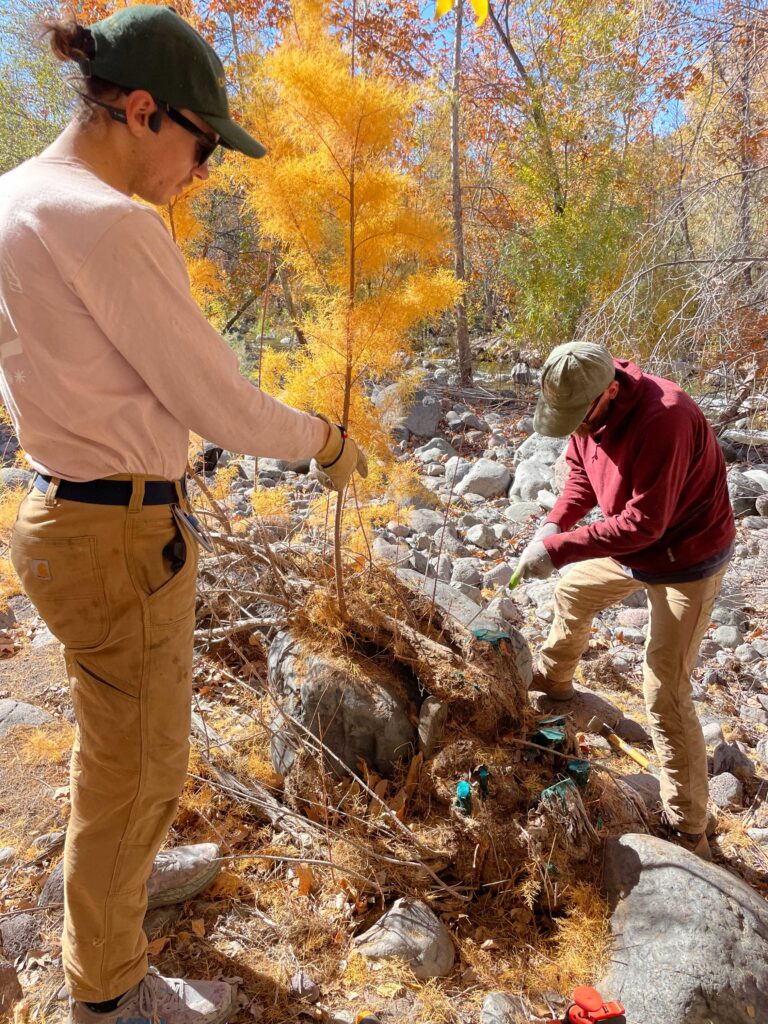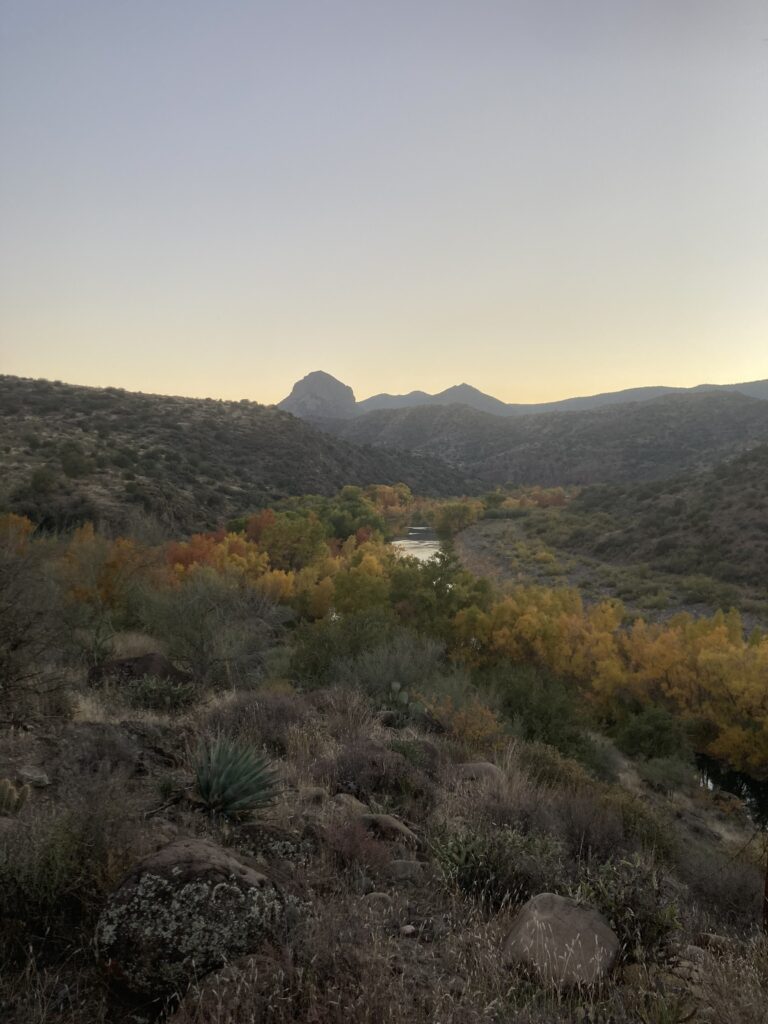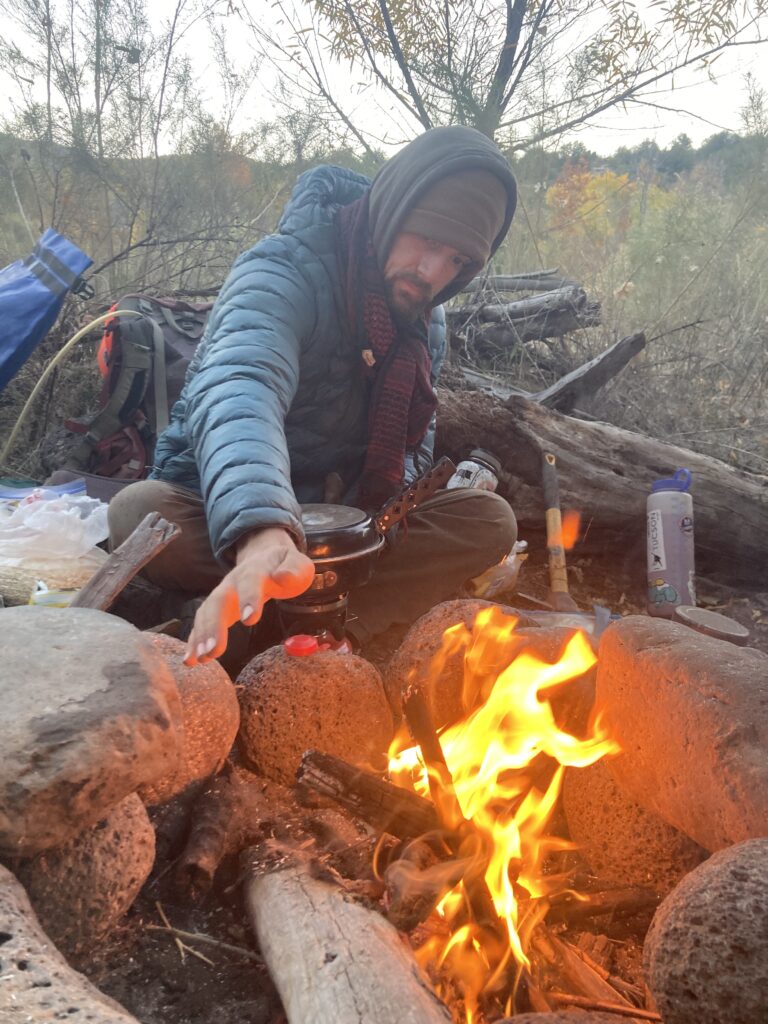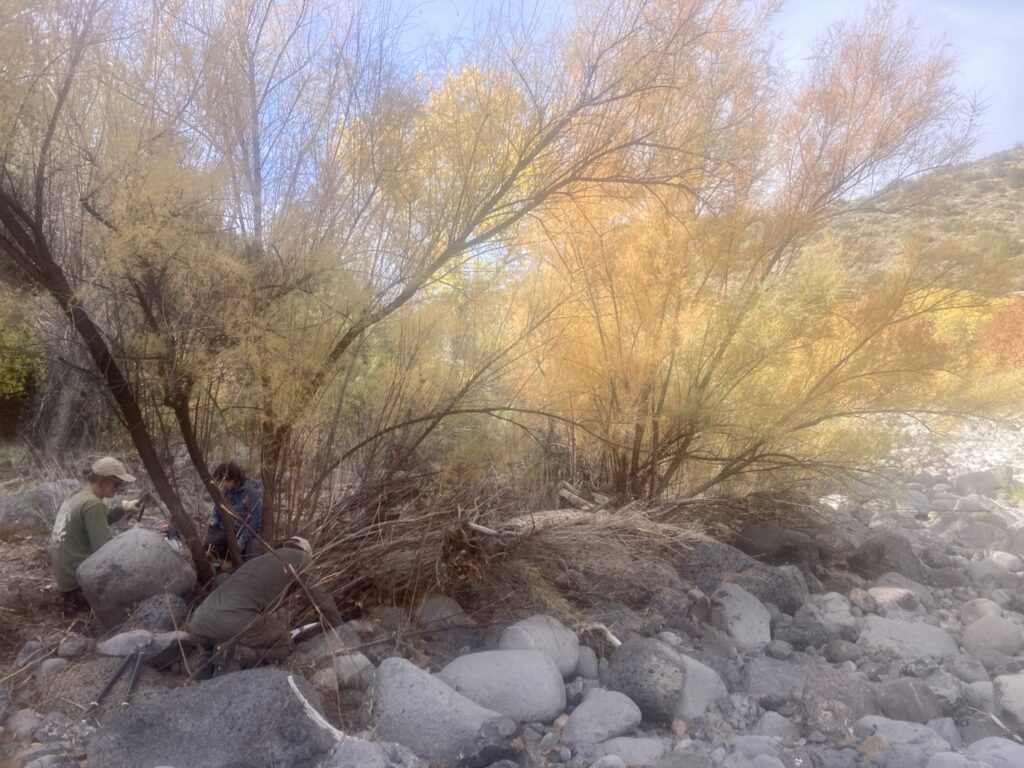
Written by Dexter Kopas, Wild Stew Field Crew Leader.
Hello, friends! I have tidings from our crew’s most recent return to one of Arizona’s most sacred gardens of Eden. Streams were crossed, bushes were whacked, and a great many invasive plants were battled. Let’s take a moment to dive into the life-giving waters of Fossil Creek.
This was my fifth trip and counting to this perennial spring-fed oasis near the center of the state. For more on the background of Wild Arizona’s continuing partnership with the Forest Service and Friends of the Verde River on this restoration project, check out these previous blog posts. Suffice it to say, there are a few invasive, non-native plants that are just beginning to gain a foothold in the watershed, so we are taking advantage of this critical moment to prevent them from permanently altering what is a unique and remarkably diverse ecosystem. Befitting its designation as a Wild and Scenic River, in Fossil Creek floods are still common and the waters haphazardly mingle, break apart, slow down, speed up, and otherwise go all cattywampus. Similar to how they did long before dams, overgrazing, roads, and the Army Corps of Engineers strived to turn each stream in the country into a rigid canal.


Even with these crucial, empowering, life-enriching, farsighted goals in our heads, the reality of remote field work week-in and week-out can sometimes feel different in the moment. To be frank, it can feel a bit silly to be ducking stabbing branches in our path (upon returning home I would dump perhaps half a pound of sticks and leaves out of my backpack), crossing cold creeks daily, picking rocks out of tangled tamarisk stalks, running in laps after work on a long sandbar as the best available aerobic outlet, spraying smurf-blue herbicide on plants, having little, if any, contact with the wider world for a week, and building fires first thing in the morning to warm your hands from the cold air coming off the nearby flowing waters.


In these moments, I am most thankful for the people I work with. On this hitch, Sage, Foster, Kile, and Friends of the Verde River’s restoration technician/GIS specialist, Hudson Keffer, were the best company one could hope for. We took on each challenge with a joke and a smile. We communicated our feelings, needs, and suggestions effectively and compassionately. We created delicious franken-meals. We built roaring fires. We pondered thought-provoking questions, such as when should a comedian be canceled, how can Wild AZ improve its logistical efficiency, how can conservation be more bipartisan, what would you do if the world was going to end in 48 hours, what is the difference between insane in the membrane and insane in the brain, what is the history behind the rock structure ruins we came across, and many more. As the youths might say, everyone was 100 no cap on universe type stuff for real this time. Sometimes you need a silly outlook to match a silly time.
In this recent trip down, our team cut 495 stems of Tamarisk, including many more established specimens that certainly cross the line between “shrub” and “tree.” That leaves just 1 mile of creek in need of treatment to finish off the 14 miles of Fossil Creek between its source and its confluence with the Verde River. This task should be completed in the coming year.


When I look back on the melange of goofiness, remarkable beauty, and isolation that I seem to come across when working in the remote parts of this canyon, I think about the meaning of wilderness. Despite being a place that brings few immediate physical comforts, there is immense value there. To me, you don’t need to assign numerical or scientific reasons to protect such a bizarrely beautiful area. Perhaps you don’t even need to visit it. Let me tell you, it is there, and it is wonderful, and I hope it is never again developed or taken over by a monoculture of thirsty invasive plants.


 Sunshine & Snowstorms
Sunshine & Snowstorms  on the Highline Trail
on the Highline Trail





